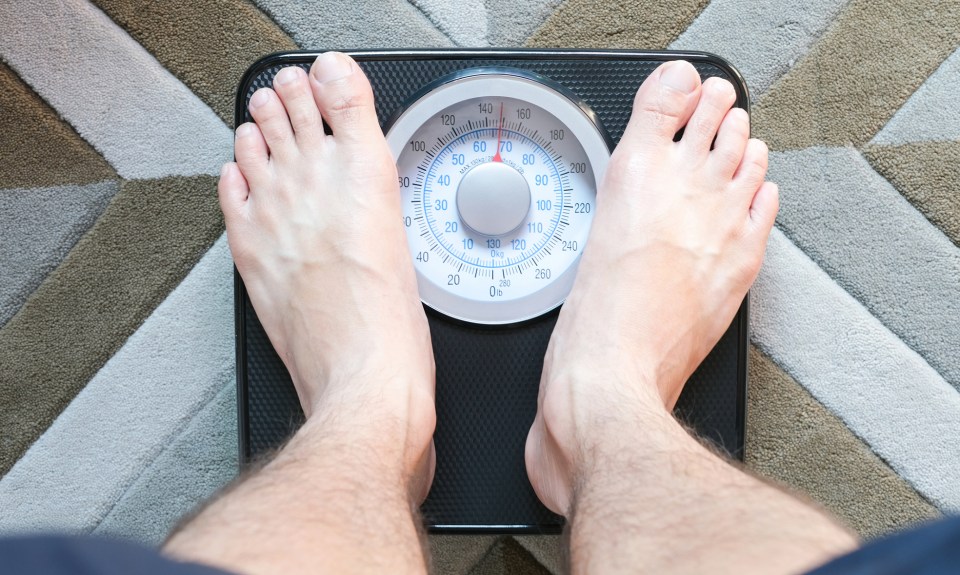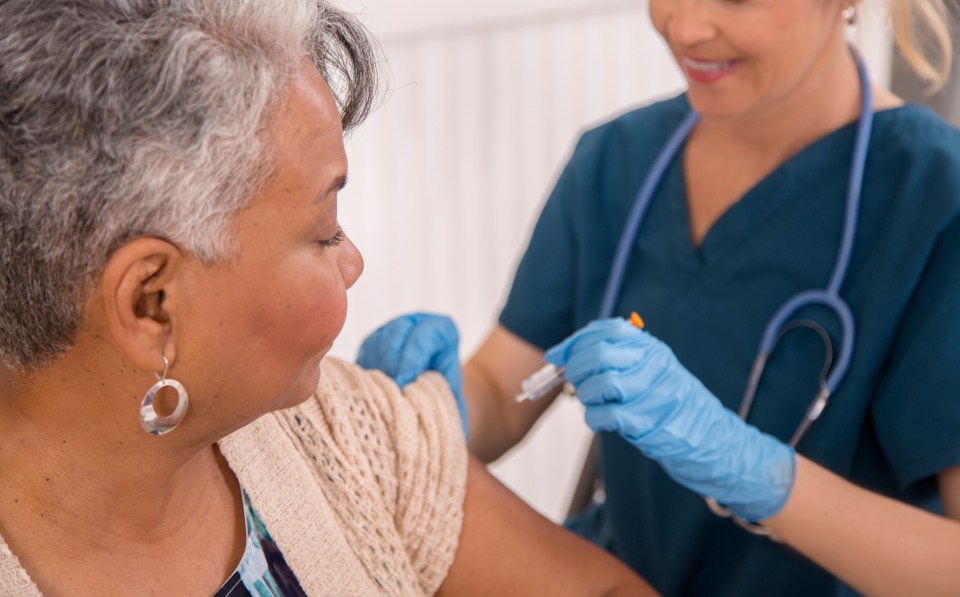Obesity is a worldwide health problem, but Americans lead the way with the highest mean body-mass index (BMI) among high income countries. And according to the National Center for Health Statistics, obesity numbers are continuing to climb. Over 42 percent of adults in the U.S. are obese and more than 9 percent suffer from the most severe obesity, also known as Class III or morbid obesity. The condition can have serious consequences for physical, emotional, and social health.
Defining Severe Obesity
Class III obesity is defined as body weight 100 pounds over the optimal range for weight and sex, or about twice your optimal weight. In addition, Body mass index (BMI) screening is a tool used to recognize high body fatness. BMI of 40 or greater is indicative of severe obesity.
BMI
Although BMI screening does not directly measure body fat, it can help in determining whether you are overweight and provide insight into your risk for medical conditions such as high blood pressure, heart disease, and diabetes. Some drawbacks to BMI screening are that it isn’t always accurate in athletes with high muscle mass, pregnancy, and the elderly. It also fails to account for bone size and fat location. This is significant because abdominal fat is associated with a much higher health risk than fat that has accumulated on the thighs or buttocks. While not perfect, the screening test has become widely used mostly because it is easy and inexpensive.
Another advantage to BMI screening is that you can measure your own BMI. Body-mass index is calculated by taking your weight in pounds divided by your height in inches squared and multiplied by 703. There are many BMI calculators, such as this one from the Centers for Disease Control and Prevention Adult BMI calculator, that will do the math for you.
| BMI Measurement | Range |
| BMI 18.5 | Underweight |
| BMI 18.5 < 25 | Healthy Weight |
| BMI 25 < 30 | Overweight |
| BMI 30 or higher | Obese |
| BMI 30 < 35 | Class I Obesity |
| BMI 35 < 40 | Class II Obesity |
| BMI 40 or higher | Class III (or severe) Obesity |
If your doctor has concerns about your body fat percentage, other more extensive testing may be recommended including skin fold thickness measurements, underwater weighing, bioelectric impedance analysis, dual-energy X-ray absorptiometry (DEXA scan) and isotope dilution analysis.
Health Risks of Severe Obesity
Obesity is categorized by degree because your health risks increase as weight climbs. Class III obesity affects nearly every system in the body, shortens lifespan and raises the risk of serious medical conditions.
The list of medical issues associated with Class III obesity is lengthy and includes the following:
- High blood pressure. Being overweight forces your heart to work harder to pump blood. This increases resistance in the arteries, leading to high blood pressure. The risk is even higher if you carry your weight around the abdomen.
- Osteoarthritis (OA). According to the information from the Arthritis Foundation, carrying even 10 excess pounds places an extra 10 to 50 pounds of pressure on your knee joints and raises your risk of developing OA. Being overweight also speeds cartilage deterioration.
- Type 2 diabetes. Obesity and inactivity worsen insulin resistance. The risk of developing type 2 diabetes increases as your weight rises. Adults with a BMI over 35 are 20 times more likely to develop type 2 diabetes.
- Heart disease: The Obesity Action Coalition reports high amounts of fat accumulation leads to changes in heart function. Class III obesity is also associated with other medical conditions such as high blood pressure, diabetes, and sleep apnea which can increase the risk of heart disease. If you have Class III obesity, you are at risk of developing congestive heart failure, sudden cardiac death, and heart attack.
- Stroke. Studies have shown stroke incidence is higher in obese individuals. Excess weight increases the workload for the circulatory system and can damage vessels in your brain, placing you at higher risk of stroke.
- Sleep apnea. Class III obesity places pressure on the upper airways and can lead to airway collapse and reduced neuromuscular control. Fatty deposits also decrease lung volume making it harder to breathe.
- Metabolic syndrome. Obesity has been shown to increase the risk of metabolic syndrome. Also known as insulin resistance syndrome, metabolic syndrome is a combination of three or more of the following conditions:
- Abdominal obesity
- High blood pressure
- High blood sugar levels
- Triglyceride level greater than 150 mg/dL
- LDL level (good cholesterol) less than 40mg/dL in men and less than 50mg/dL in women
- Fatty liver diseases. When the liver’s weight is more than 5 to 10 percent fat, the condition is known as fatty liver. You are at risk of Non-Alcoholic Fatty Liver Disease if you are overweight, obese, have high cholesterol, high triglycerides, or diabetes.
- Gallbladder disease. Being obese makes it harder for the gallbladder to empty, making it more prone to develop stones. High levels of cholesterol and bilirubin can also lead to stones.
- Cancers. Information from an International Agency for Research on Cancer Working Group revealed there is evidence that high body fat is associated with an increased risk of the following cancers:
- Endometrial
- Esophageal
- Gastric
- Liver
- Kidney
- Multiple Myeloma
- Meningioma
- Pancreatic
- Colorectal
- Gallbladder
- Breast
- Ovarian
- Thyroid
- Kidney disease. On their website, the Obesity Action Coalition (OAC), states obesity increases the risk of major chronic kidney disease (CKD) factors including type 2 diabetes and high blood pressure. Obesity also forces the kidneys to work harder to meet metabolic demands.
Causes of Class III Obesity
Class III Obesity is caused by a combination of factors. Diet plays a major role, but it is not the only factor. If the number of calories consumed exceeds the energy your body uses (calories burned), your weight increases, and the excess calories are stored as fat in your body.
Genetics and hormonal imbalance have also been linked to obesity, and cultural, environmental and socioeconomic factors also influence weight. For instance, if you live in an area where access to healthy foods is limited or costly, you may find yourself choosing easy-to-obtain high-calorie fast foods. Exercise may also be hampered by environment. If you have limited access to exercise facilities, safe parks or walking trails you may not be as active as if you lived in an area where those things were readily available.
Obesity also has emotional and behavioral ties. You may turn to food to cope with stress or “the blues.” And today’s lifestyle caters to convenience. Less physically demanding jobs, online shopping, remote controls, elevators and video games mean less movement and fewer calories burned.
Treatment of Class III Obesity
With all the health risks associated with Class III obesity, the goal of treatment is to improve health. While weight loss may not erase all the health problems you developed because of obesity, there is evidence weight loss can lead to better health.
There are several treatment options for the severely obese, both surgical and non-surgical. Surgical intervention is generally reserved for those who are at least 100 pounds over their recommended weight range, with a BMI of 40 or greater with no comorbidities (additional health related problems) or 35 and greater with comorbidities.
- Diet, exercise, and behavior modification. Low calorie diets that maintain good nutrition can help with weight loss in all classes of obesity. Combined with behavioral modification techniques such as setting realistic goals, maintaining diet and exercise records, and developing a support network, these efforts can result in weight loss. While you may experience some success with this combination, unfortunately, for most severely obese individuals, the weight loss is only temporary.
- Weight management medications. Your doctor may prescribe a weight loss medication if you have health problems related to obesity. These medications are most successful when used in combination with diet, exercise and behavioral modification. The prescription medications should be taken under a doctor’s care and there are side effects which vary depending on the medication. Without proper diet, exercise and lifestyle changes, some weight gain is typical when the medications are stopped.
- Endoscopic Sleeve Gastroplasty (ESG). Also known as the accordion procedure, this is an alternative to weight loss surgery. The minimally invasive procedure is performed by inserting an endoscope (a flexible tube with a camera) down the throat into the stomach. The surgeon sutures the stomach reducing the size up to 80 percent.
- AspireAssist is a newer, reversible, non-surgical treatment for class III obesity. Using an endoscope, a tube is placed in the stomach under light sedation. The tube is connected to a button on the skin. Shortly after a meal, up to 30 percent of calories are removed via the button before they are absorbed by the body.
- Gastric balloon. This is another endoscopic procedure that allows the insertion of a balloon-like device that is inflated to fill about 40 percent of the stomach space.
- Surgical procedures. There are multiple surgical options for the treatment of obesity. These include Roux-en-Y, gastric banding, sleeve gastrectomy and biliopancreatic diversion with duodenal switch.
Severe Obesity and Rehabilitation
Carrying excess weight is hard on joints. Osteoarthritis, joint degeneration and strain on the joint can lead to the need for hip or other joint replacement surgery. Health issues linked to obesity can also increase the need and risks for other types of surgery. Surgical recovery can be more difficult and lengthier. With these unique challenges, you may require professional assistance following surgery. Often, this means a stay in an inpatient rehabilitation facility.
The benefits of inpatient rehabilitation include assistance with mobility and activities of daily living. Encompass Health offers physical therapy sessions designed to increase range of motion, flexibility, improve gait, and balance. During occupational therapy sessions, you will focus on daily needs such as dressing, bathing and other activities that will make going home more manageable.
Even without surgery, physical therapy and rehabilitation can be beneficial for the severely obese. Individualized programs designed by a trained physical therapist can help reduce pain and increase activity in a supervised medical setting.
Healthy Eating for Weight Loss
While dieting alone is not the cure for obesity, you can start with small changes today. Making healthy eating choices with easy-to-prepare recipes from the American Heart Association recipes, like the one below, is the first step in taking control of your physical health.

Zippy Southwest Chicken Fajita Salad
Serves 4
Calories – 305 per serving
Protein – 33 per serving
Fiber – 7 grams per serving
Pico de Gallo
- 2 tomatoes (chopped)
- 1/2 small onion (diced)
- 1 chopped jalapeño (seeds can be removed to be milder), (optional)
- 1/4 cup chopped cilantro
- 2 teaspoon lime or lemon juice
Zippy Southwest Chicken Fajita Salad
- 2 1/2 cups chopped chicken from leftover Salmon or Chicken Kabobs (refer to related recipes)
- 16 ounces packaged, frozen bell pepper and onion stir-fry (thawed)
- 15.5 ounces canned, no-salt-added, or, low-sodium black beans (drained, rinsed)
- 3/4 teaspoon salt-free chili powder
- 1 chopped head lettuce (green leaf, red leaf or romaine)
- 2 whole-wheat tortillas (halved, optional)
Directions
Pico de Gallo
In a small bowl, add tomatoes, onion, jalapeño, cilantro, and lime juice and combine.
Zippy Southwest Chicken Fajita Salad
In a heatproof bowl, add chicken, vegetables, beans, and chili powder. Stir and heat in microwave until warmed.
Pile lettuce onto plates. Top with chicken mixture and pico de gallo. Serve with tortilla halves, if desired.
The content of this site is for informational purposes only and should not be taken as professional medical advice. Always seek the advice of your physician or other qualified healthcare provider with any questions you may have regarding any medical conditions or treatments.



